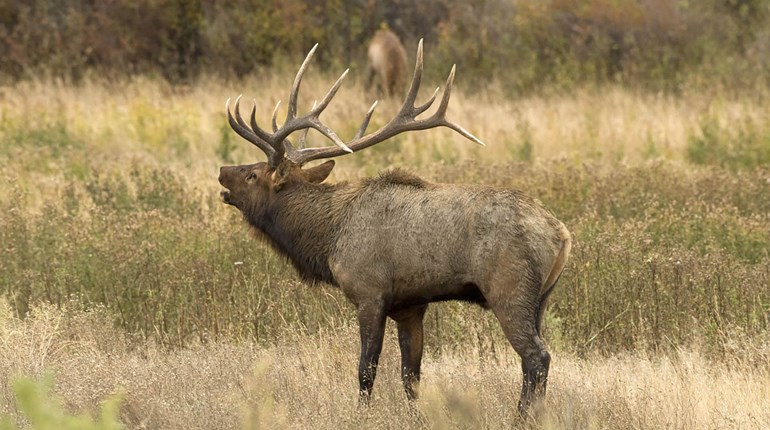
Many children (and adults) are afraid of the wild creatures they aren't familiar with. Bats, spiders, birds, fish, alligators, coyotes and more incite exaggerated fear. According to the U.S. Fish & Wildlife Service, rangers on national wildlife refuges constantly come across people who are scared or nervous about the animal species they see.
To help anxious refuge visitors, some staff have shared helpful tactics with the USFWS:
Admit to fears of their own.
Visitors may be surprised to hear refuge staffers aren't all fearless. Snakes and spiders don't faze Mendenhall, at Tualatin River Refuge. "I actually don't care for raccoons," she says. "I'm trying to learn more about them." Bosque del Apache Refuge's deputy manager Aaron Mize owns up to a fear of heights, snakes and – he admits this is a weird one – "bottom-feeding fish: suckers and carp with their nasty little mouths. There's a reason I'm not a fisheries biologist."
Find out what they know.
At Patuxent Refuge, Harrison meets students on familiar turf before a refuge visit. She throws them softball questions: "Do you spend any time outside? What's your favorite animal?" Then she moves to the hard stuff: "Are there any animals you're worried about?" She invites students to confide fears in writing "so they don't have to worry about being embarrassed in front of their classmates."
Don't dissemble. To a child nervous about snakes, Harrison offers, "Just so you know, there are snakes at Patuxent, but I almost never get to see any. That's because they're shy, and they can feel the ground tremble, and they go and hide when they hear people coming."
Never feed a wild animal.
Says Westland, "If fed, they lose their fear of humans, so we do a ton of education about not feeding alligators." Also ill-advised: getting too close, crouching at the water's edge (you look smaller), turning your back or challenging a basking gator for rights to a path. Even if you were there first, go around the gator. Says Westland, "People joke, just as they do with bears, ‘You just have to run faster than person with you.' You shouldn't be running at all."
Contain nervous adults.
Says Sagan, "I allow the adults to be nervous if they like but not to show it in front of the kids so they do not develop the same fear for no reason."
Let kids adjust at their own pace.
In classroom demos, Harrison lets kids decide if they want to touch a live frog or snake. "I have sometimes had parents take a child's hand and say, ‘Touch it, touch it.' And I have to say, ‘Remember, we want to empower kids to say ‘no.' So, when they say it, we have to respect it.'"
Appoint a helper.
At Assabet Refuge near Boston, visitor services manager Kizette Ortiz Vanger watched an intern calm an anxious young visitor by asking, "'Would you like to be my assistant for the day?' The kid said, ‘Yeah.' The intern would say, ‘Do you know what this is?' or ‘Can you hold this for me?' He was being more supportive of the kid without singling him out."
Show enthusiasm.
"Students pick up on that; they see that you're not afraid," says Sagan at Great Swamp. "We take kids on a boardwalk above the swamp. I tell them they're going to see cool things like spotted salamanders and turtles. Someone will say, ‘Oh gross.' And I say, ‘No, they're so cool. Wait til you see one.' "
Some tips for parents to reduce kids' nature fears:
• Encourage your kids to play outdoors – whether under your supervision or in a nature club. Says Dave Sagan, "That's the biggest thing: exposure to nature. Let them get their hands dirty. Kids are told to be scared of so many things nowadays. ...When they experience nature on their own, they say, ‘That was neat. That wasn't scary.'"
• Relate unfamiliar things to stuff kids already know. That's what Laurel Harrison does at Patuxent Refuge when she invites kids to touch, say, a black rat snake. "If you say, ‘It feels kind of like a basketball,' then they want to touch it to see if it's true. If you say a snake egg feels like a stale marshmallow, then they'll touch it. If I want them to touch the side of a toad filled up with air, I might say, ‘I hear if you feel it on its side, it feels a little like a water balloon.' They'll touch it and say, ‘That's right. It does.'"
• Replace myth with fact. Says Jenna Mendenhall: "My son is afraid of ants. I help him understand it's okay to be afraid. Once you learn more, hopefully you won't be as afraid. Education is the main way to get over your fear."
• Don't overreact. You may be "scared to death of snakes," allows Mendenhall. Try not to transmit that fear to your kids.







































